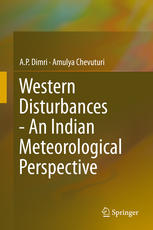

Most ebook files are in PDF format, so you can easily read them using various software such as Foxit Reader or directly on the Google Chrome browser.
Some ebook files are released by publishers in other formats such as .awz, .mobi, .epub, .fb2, etc. You may need to install specific software to read these formats on mobile/PC, such as Calibre.
Please read the tutorial at this link: https://ebookbell.com/faq
We offer FREE conversion to the popular formats you request; however, this may take some time. Therefore, right after payment, please email us, and we will try to provide the service as quickly as possible.
For some exceptional file formats or broken links (if any), please refrain from opening any disputes. Instead, email us first, and we will try to assist within a maximum of 6 hours.
EbookBell Team

4.0
96 reviewsThis book examines the meteorological phenomenon known as Western Disturbances (WDs) and traces their influence on the Indian subcontinent. It fully details the unique characteristics and dynamics of these disturbances, which produce large-scale instabilities in the atmosphere over northern India due to the orographic influence of the Himalayas.
The authors first present a definition of the phenomenon and then go on to detail their structure and migration. Topics include dynamics, energetics and thermodynamics; modelling studies; land-use and land-cover interactions; and WDs in the changing climate.
In addition, coverage outlines how WDs interact with and influence other weather systems throughout the four seasons of Indian climate: winter, pre-monsoon, monsoon and post-monsoon. It places special emphasis on wintertime dynamics since WDs significantly contribute to the precipitation in India during this time. The authors explain why this period should be termed "Indian winter monsoon" and differentiate it from the northeast monsoon which so far is the prevalent term used in the region's meteorological parlance.
Complete with detailed illustrations and case studies, this monograph will help researchers and students gain a fundamental understanding of these important storms. This knowledge is essential not only for short–term and seasonal hydrometeorological forecasting but also for the assessment of regional climate change and its impacts.